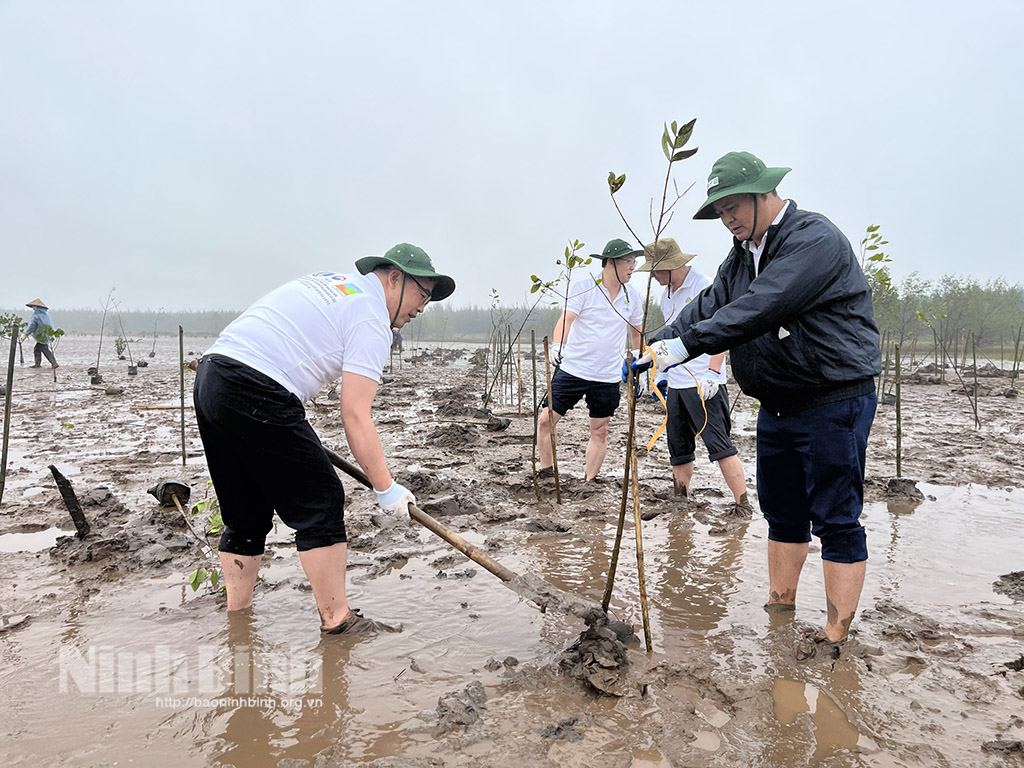Ninh Binh province's coastal mangrove afforestation efforts pay off

"Green shield" protects dykes and villages
Ninh Binh has an 18-kilometer coastline running through the four communes of Kim Trung, Kim Hai, Kim Dong and Kim Tan of Kim Son district.
Located in the Tonkin Gulf and close to Day river, Ninh Binh's sea water has constantly suffered negative impacts from natural disasters such as storms, floods, heavy rains, sea level rise and salt intrusion, which have remarkably affected the life of local people and the locality's socio-economic development.
To resolve these limitations, in recent years, Ninh Binh has cooperated with the Ministry of Agriculture and Rural Development and organizations both at home and abroad to plant hundreds of mangrove forest to protect river and sea dykes and aquaculture areas.
Now, the green colour of mangrove trees cover the whole vast coastal areas. Their roots have kept land and prevented soil erosion effectively.
Nguyen Thi Ha, a local resident of Kim Son district, said in the past, when the rainy season came, local people were very worried. At that time, sea waves directly struck into dykes and overflowed into fields and aquaculture ponds because there were no trees to prevent sea waves and winds. Now, mangrove trees have been grown and they formed a green wall to protect dykes, villages and properties of local people.

Local residents benefit from mangrove forest
Mangrove forest not only formed a steady "wall" against sea waves and winds, but it also creates abundant aquatic sources, thereby creating livelihoods for local residents.
Thanks to mangrove forest, the life of local residents in Kim Son district has been improved remarkably. Poor farmers who cannot afford to buy fishing boats now can earn their living by catching crabs and snails in the mangrove forest.
In addition, honeybee breeding in the mangrove forest has also developed fruitfully, helping many honeybee farmers earn tens of millions of VND each season.
In order to protect the mangrove forest in Kim Son, organisations and border guard force have mobilised and guided local people to eliminate barnacle sticking on tree trunks while local authorities have also regularly popularised about the role of mangrove forest and suitable exploitation ways in a bid to protect the mangrove forest sustainably.
Translated by Nguyen Thuy


